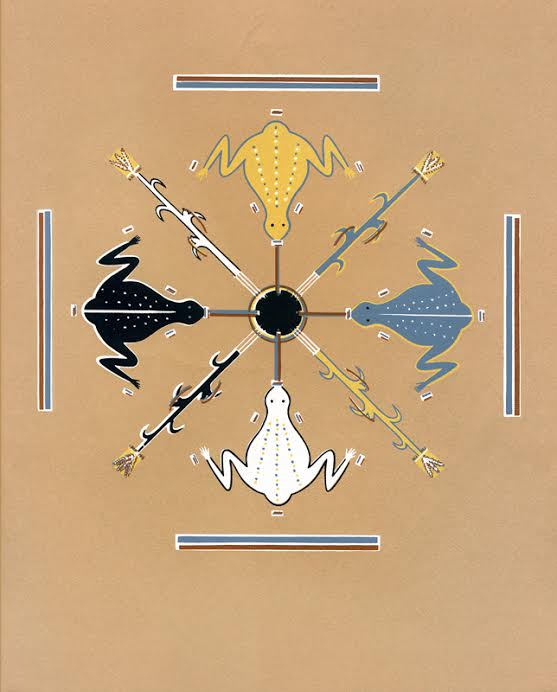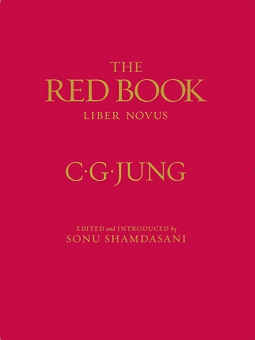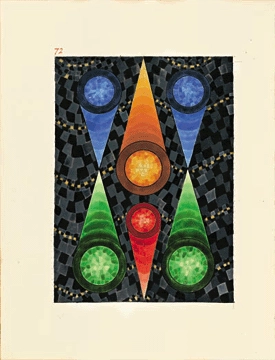ARAS Connections: Image and Archetype - 2010 Issue 1

This edition is devoted to several articles on the recently published Red Book. The publication of the Red Book has been a joint effort of the Philemon Foundation and W.W. Norton & Company, both of whom have been extremely generous in allowing us to reproduce many images from this extraordinary volume. Linda Carter and Ami Ronnberg made invaluable contributions to this edition of the Journal as my co-editors.
The Red Book is huge in many ways. Physically, it weighs 8.8 pounds and its dimensions are 15 3/4 inches x 12 inches--a very large book by any standards. Psychologically, it reveals the prima materia of Jung's own mythology, grounded in archetypal images and forces. Historically, the Red Book is a foundation stone for much of both the past and future development of Analytical Psychology. Culturally, the Red Book reflects many of the currents that emerged in early 20th century globalism. Spiritually, the Red Book is one of the first modern records of the rediscovery of the inner world and its link to spiritual values.
Another part of the enormous scope of the Red Book is that it cannot be digested in a few sittings or even a few years. Perhaps it will take fully another generation of scholars to put the Red Book in perspective. That's why this edition of the ARAS/Art and Psyche Online Journal devoted to the Red Book presents no more than an early taste of what this book has to offer. In the following articles our authors touch just a few of the multiple ways in which one might approach the Red Book: On the Aspects of Beauty in C.G. Jung's Red Book by Paul Brutsche, First Impressions by Thomas Kirsch, and A Pictorial Guide to The Red Book by Jay Sherry. Each of our authors has a point of view and an early take on the Red Book that might help us begin to develop our own point of view about what is of value in this book. Their reflections are highlighted by a beautiful, three-dimensional Tibetan image, The Mandala of the Enlightened Mind by Kavita Bala and Liz Popolo of Cornell University. Our next edition will return to the publication of papers from the Art and Psyche conference, as well as other ARAS Online articles of interest.
Tom Singer, M.D.
Co-Chair of ARAS Online for National ARAS
The Red Book, First Impressions

Jung's Red Book has just been released, and I am writing this a week after the material has been made available to the public. What has long been considered the source of all Jung's creative ideas after his traumatic split with Freud is now public. In the seminal chapter ÒConfrontation with the UnconsciousÓ in Memories, Dreams, Reflections, his so-called autobiography, Jung writes ÒAll my later discoveries come from the experiences that I had during that period of immersion in my inner fantasies.Ó This is where Jung experienced the reality of the unconscious and ÒknewÓ that there was a layer beyond the personal unconscious as expressed by Freud. This deeper strata of the unconscious Jung variously called the realm of archetypes, collective unconscious, the objective psyche, but no matter what name he used, he identified an aspect of the psyche that is common to all mankind and is similar to other inborn functions of the human organism. Since his break with Freud, Jung has been criticized by scientists and others who have not accepted his theory that there is an inherited level of the psyche, the collective unconscious.
Now, thanks to the brilliant editorial work of Sonu Shamdasani, with the support of the Jung Estate, we have the raw data of The Red Book, carefully researched and amply footnoted. It is from this material that Jung developed all his mature thoughts on the nature of the psyche. How does one interpret this book of 54 paintings and over 200 pages of text written in Gothic text?
Read the entire paper.
A Pictorial Guide to the Red Book

The publication of The Red Book by W.W. Norton & Co. last October was a major publishing event not only for the Jungian community but for all those interested in psychology and 20th century culture. The fact that Jung circulated drafts of it and showed it to many different people makes it clear that he did intend it to reach a wider public. The Philemon Foundation and the Jung family are to be thanked for doing just that. The book is selling well and is now in its sixth printing; the original was on display at the Rubin Museum of Asian Art in New York and now travels to the Hammer Museum in Los Angeles where a series of events are planned in coordination with its exhibition. (Readers should look for specific information about these events on the front page of this issue.) It then goes to the Library of Congress with final stops in Paris and Zurich. How lucky we are to realize that when we read Jung addressing himself to my friends that we are now included in his salutation. Sonu Shamdasani's commentary and footnotes brilliantly elucidate the text and its evolution while the cross-referencing system helps us navigate its complexities with relative ease.
I will confine my observations to its imagery because the text will take time to unravel. The book is like a primeval forest that readers enter at the spot meant for them alone; it is a hermeneutistic delight!
It was with a sense of excitement that I opened the book and paged through it for the first time. How would Jung's depictions of his fantasies compare to the images I had formed in my mind over the years from reading Confrontation with the Unconscious? They unfold in the Liber Primus in a series of panels done in a style reminiscent of illustrations found in the popular historical literature of the period which would have inspired his boyhood drawings of battles and castles.
Read the entire paper.
On Aspects of Beauty in C.G. Jung's Red Book

The publication of The Red Book has met with tremendous success. Such success, of course, rests on the exceptional quality of the content and the depth and richness of the imagination conveyed throughout; also of central significance is the unique artistic quality. The book immediately impresses by the beauty of the calligraphy, the stunning images and the many beautiful adornments. It amazes by the technical skill and the aesthetical sense of the author, reaching a level of artistry one would not have expected from a scientist. The patience and care with which this precious work has been elaborated is profoundly moving. One finds oneself witnessing an inner process of a rare depth, having taken shape in the silence of a long and loving encounter with the soul.
The beauty of the forms one finds in The Red Book did not primarily emanate from an aesthetic preoccupation on the part of Jung: for him this was a soul matter. It is amazing to think that a person, throughout 16 long years, would be willing to produce a transcription of a text containing inner experiences previously written (in the Black Books) and to invest an incredible amount of laborious devotion to embellishment of color and pictures; and all this without the intention of publishing it, at least not while he was working on it. While elaborating his pictures and carefully transcribing his original reflections in a calligraphic style, Jung's mind was not turned towards a future public he wanted to please or to whom he wanted to teach something; this endeavour was a goal in and of itself.
Read the entire paper.
Contents
Become a Member of ARAS!
Become a member of ARAS Online and you'll receive free, unlimited use of the entire archive of 17,000 images and 20,000 pages of commentary any time you wish—at home, in your office, or wherever you take your computer.
The entire contents of three magnificent ARAS books: An Encyclopedia of Archetypal Symbolism, The Body and The Book of Symbols are included in the archive. These books cost $330 when purchased on their own.
You can join ARAS Online instantly and search the archive immediately. If you have questions, please call (212) 697-3480 or email info@aras.org
We Value Your Ideas
As our newsletter grows to cover both the ARAS archive and the broad world of art and psyche, we're eager to have your suggestions and thoughts on how to improve it. Please send your comments to info@aras.org. We look forward to your input and will reply to every message.
Subscribe
If you're not already a subscriber and would like to receive subsequent issues of this newsletter by email at no cost, e-mail us at newsletter@aras.org.
